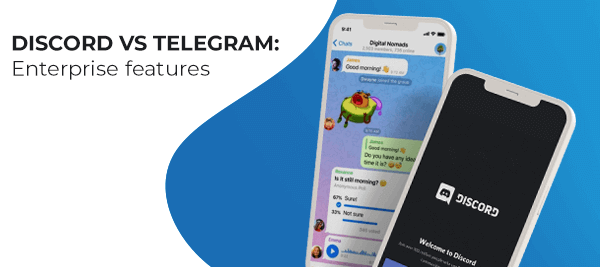
In the sprawling landscape of social media platforms, Telegram and Discord have carved unique niches, redefining how digital communities form, interact, and thrive. While both cater to community-building, they serve distinct purposes and audiences. Let’s dive deeper into these platforms, exploring their significance and roles in fostering digital communities.
Telegram sprouted as a secure messaging platform, emphasizing user privacy and speed. Over time, its features expanded, offering a robust environment for community interaction through channels and groups.
Discord, on the other hand, started as a haven for gamers, providing voice, video, and text communication. It has since evolved, becoming a go-to platform for various communities, from study groups to hobby collectives.
Telegram’s foundation is rooted in user privacy. With end-to-end encryption for personal chats and a commitment to user data security, Telegram appeals to users valuing confidentiality.
Discord, while prioritizing user safety, focuses more on community moderation tools, allowing server administrators to manage and safeguard their spaces.
Telegram excels in broadcasting through its channels, where creators or administrators can share updates to large audiences. Its group chats also facilitate discussions, albeit in a less structured manner compared to Discord.
Discord shines in creating structured community spaces. Servers can have multiple channels, divided by topics or purposes, promoting organized discussions. Voice channels further enrich the experience, offering real-time interactions.

Both platforms embrace bots, but their applications vary.
Telegram bots often enhance user experience through automated updates, polls, or moderation tasks. They’re versatile, aiding in everything from managing group memberships to fetching news.
Discord bots, given the platform’s gaming roots, often integrate with gaming platforms and streaming services. They also assist in server moderation, music playback, and role assignments, enhancing server functionality.
Telegram introduced the ability for creators to monetize their channels through premium content and subscription models, offering a potential revenue stream.
Discord, with its Nitro subscription, doesn’t directly allow community monetization. However, many communities leverage third-party platforms to create Patreon-like systems for exclusive content or perks.
Telegram offers simplicity, making it accessible for users seeking straightforward community interactions or updates.
Discord, with its extensive feature set, caters to those looking for a more comprehensive community experience. Its adaptability has led to its adoption beyond gaming, serving educational groups, professional communities, and more.
While Telegram and Discord originated with distinct visions, their growth trajectories have positioned them as pivotal players in the realm of digital communities. They cater to diverse needs: Telegram, with its emphasis on direct communication and broadcasting, and Discord, with its rich, multi-faceted community tools. For digital natives and brands alike, understanding the nuances of each platform can pave the way for informed community-building decisions, leveraging the strengths of both in this digital age.